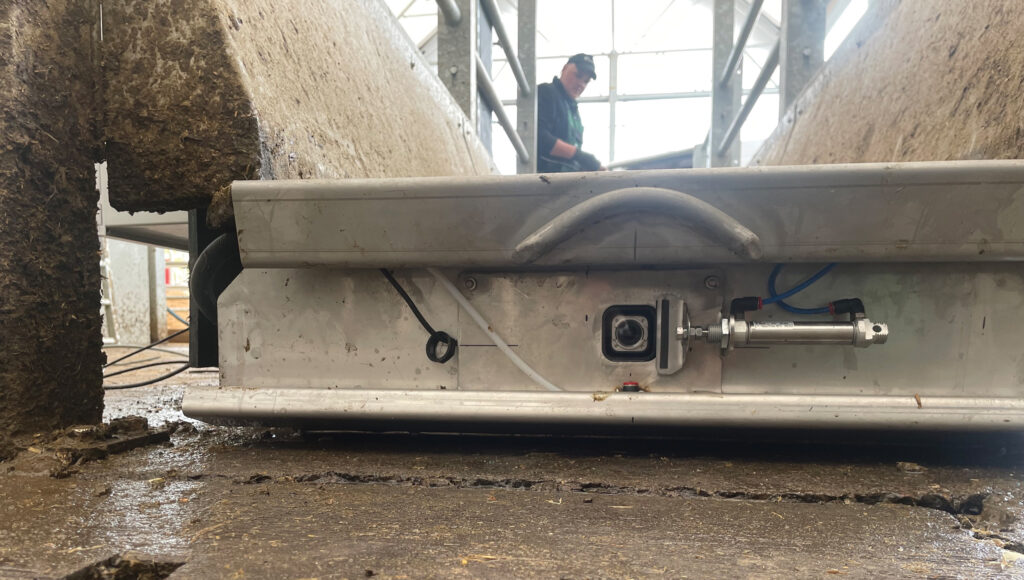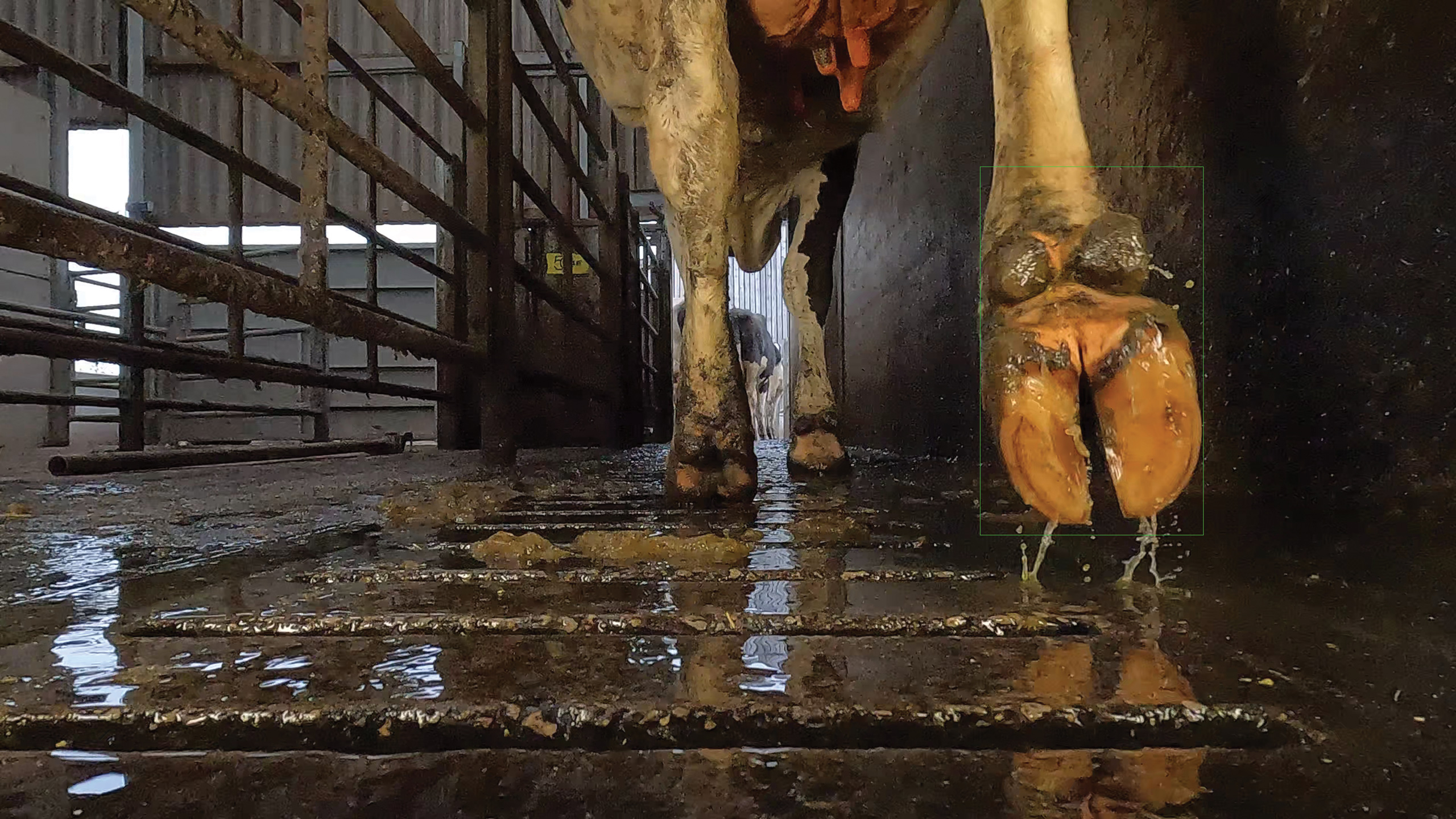Lameness tech promises fast, accurate detection
 © Hoofcount
© Hoofcount Footbath manufacturer Hoofcount has launched a revolutionary lameness detection device that automatically identifies digital dermatitis (DD) and enables faster treatment of lesions.
In the UK, 30% of cows have DD lesions and spotting it can be difficult. According to Anthony Marsh from Hoofcount, only one-third of lame cows are correctly identified by farmers.
See also: Flooring improvements help dairy unit cut lameness by 10%
Pedivue has been created to help dairy farmers overcome this, he says.
The technology has been developed by Hoofcount, the UK Agri-Tech Centre at the South West Development Centre and the Centre for Machine Vision (CMV) at the University of the West of England, Bristol.
It is the culmination of a two-year £250,000 project funded by the UK Research and Innovation (UKRI), part of Defra’s Farming Innovation Programme.
The video below shows the technology in action.
How it works
Current lameness detection technology on the market uses expensive thermal imaging cameras, or proxies, to assess the gait of animals.
However, by this time, lameness cases are often being picked up too late, explains one of the developers, Dr Wenhao Zhang from CMV.
Pedivue uses a consumer-grade camera to capture high-quality images of the soles of a cow’s feet up to 1m away as she exits the Hoofcount footbath.
A clever “windscreen wash” keeps the camera clean, and automatic lights that are illuminated by movement help provide clear images of each foot.
A computer algorithm has been created to distinguish which foot is lame, and it can even pinpoint different stages of DD (See “Lesion stages”).
Wenhao says developers have used “supervised learning” from vets to teach the model what various lesions look like.
On the four trial farms where the technology has been developed, Pedivue has been 80% accurate at correctly identifying active DD lesions (category M1 and M2), he adds.
Data are then analysed and sent to a dashboard within two to three days.
The dashboard, which can be viewed on a PC or phone app, creates a treatment list and notifies the farmer.

© Hoofcount
Vet Nick Bell from Herd Health Consultancy, who has been involved in the project, believes the technology is “groundbreaking”.
He explains: “Digital dermatitis is a surprisingly easy disease to control, yet it is rife and affects so many herds at a high level.
“The challenge is that the average farmer has got so much to keep their eye on, and spotting lesions can be challenging, particularly if feet are dirty.”
Yet speed is of the essence when it comes to treatment, he says: “Early detection combined with prompt effective treatment is critical because cows will recover quicker. [Not only this, but] cows with lesions are reservoirs of infection.”
Nick believes the technology also offers potential for treating other causes of lameness in future.
Developers are currently working on training the model to automatically mobility-score cows, and say the technology is already attracting widespread interest from milk processors and supermarkets.
Lesion stages
- M0: No visible lesions
- M1: Small ulcerated lesion (less than 2cm diameter)
- M2: Acute bright red/grey painful lesions (more than 2cm diameter)
- M3: Heeling stage – dry brown/grey scab
- M4: Chronic stage characterised by wart-like growths. Non-painful
- M4.1: Reactive stage. New red M1 lesion.
Cost
The camera costs approximately £3,000 (excluding VAT), and thereafter, farmers must pay a subscription of £1 a cow a year.
This includes four mobility scoring sessions annually with an accredited Register of Mobility Scorer person.
Pedivue is currently only compatible with Hoofcount footbaths, but its makers say there is scope to retrofit it onto other footbaths in future.
Hoofcount’s Excel 3.7m footbath costs £7,600 (excluding VAT).
Digital dermatitis stats
Heifers that calved in with digital dermatitis lost 335l of milk in their first lactation, one US study found. It also extended their calving interval by 20 days.
It is estimated that more than 90% of dairy herds in the UK suffer from digital dermatitis, and each case costs £300.
